The specifics of the installation of lighting lines with electronic transformers
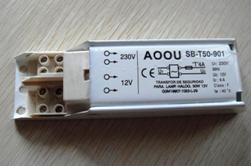 For safety reasons, lamps with halogen lamps, designed for a reduced voltage of 12 volts, are widely used. For the installation of such spotlights in a household electrical network, step-down transformers must be used. But transformers, which many are used to in industry, are not suitable here because of their large size and weight. Only special electronic transformers can be used.
For safety reasons, lamps with halogen lamps, designed for a reduced voltage of 12 volts, are widely used. For the installation of such spotlights in a household electrical network, step-down transformers must be used. But transformers, which many are used to in industry, are not suitable here because of their large size and weight. Only special electronic transformers can be used.
Electronic transformers are assembled on semiconductor technology and their power, as a rule, is not large - no more than 500 watts. But such transformers are small, economical in operation and incorporate a built-in soft starter.
Each electronic transformer is equipped with terminals for connecting the wires of the high side (220 V) and low side (12 V). Moreover, low-voltage terminals, of course, more ...
Calculation and installation of a lighting network on spotlights
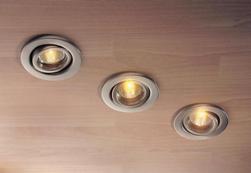 Spotlights look very impressive in any living room. But the choice of such lamps, the determination of their required quantity, power and location is simply an overwhelming task for an ignorant person, able to discourage any desire to mess with "spotlights".
Spotlights look very impressive in any living room. But the choice of such lamps, the determination of their required quantity, power and location is simply an overwhelming task for an ignorant person, able to discourage any desire to mess with "spotlights".
Indeed, with ordinary chandeliers, everything is much simpler: you place it in the center of the room, equip the lamps with the maximum possible power - and you're done. At the very least, such a chandelier will certainly illuminate the entire room if it is not completely blocked by furniture.
With spotlights, things are a little more complicated. They are designed to create a uniform light flux, but in order for them to cope with their task, you will have to resort to some calculations. In general, the calculation of the number and location of spotlights does not have fundamental differences ...
How to branch using branch clamps
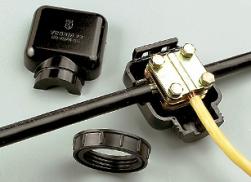 Branching with wires with copper or aluminum conductors from trunk lines without cutting them. For these purposes, it is most convenient to use special clamps for branching wires, the so-called "nuts".
Branching with wires with copper or aluminum conductors from trunk lines without cutting them. For these purposes, it is most convenient to use special clamps for branching wires, the so-called "nuts".
In this article, we consider the technology and the sequence of work when performing a branch of conductors from a trunk without cutting them using branch clamps.
Necessary tools and fixtures: a set of screwdrivers, wire cutters, universal wiring pliers, a utility knife, wrenches, any stripping tool (I use M-1U1, but any other one can be used). Materials - glass skin or sandpaper, trunk branching compresses. In order for the branch to turn out to be high-quality and reliable, it is necessary to correctly select the branch compression ...
Repair and modernization of fixtures at home
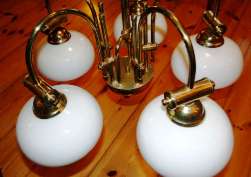 Many believe that it is easier to take and change the lamp to a new one, but this is not so - their quality does not get better over time and even expensive models have problems with electrics even if only because their manufacturers themselves do not produce wiring accessories. Therefore, it is worth a try.
Many believe that it is easier to take and change the lamp to a new one, but this is not so - their quality does not get better over time and even expensive models have problems with electrics even if only because their manufacturers themselves do not produce wiring accessories. Therefore, it is worth a try.
I want to start with a simple one: repair of fixtures in which shades are mounted with union nuts to an external thread on the cartridge housing. There are a lot of such lamps now, both single-lamp and multi-track chandeliers. There are with cartridges E27 and minions E14, I will start with the latter.
Now on sale and in use there are a lot of diverse and sometimes quite beautiful chandeliers with 3-9 horns and more for minions with such a ceiling fixture. Cartridges, usually plastic, are not of the best quality: initially or over time, contact with the base in them becomes completely bad ...
How to make household lamps work long and reliably
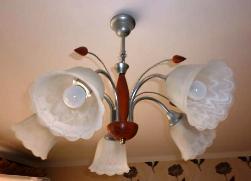 In principle, it is not so important, you use ordinary incandescent lamps or halogen lamps or even compact fluorescent lamps - the lamp must be in any case working!
In principle, it is not so important, you use ordinary incandescent lamps or halogen lamps or even compact fluorescent lamps - the lamp must be in any case working!
The main problem of modern luminaires is wiring accessories and, often, wiring (internal wiring in the luminaire means, not the one in the walls). Regarding wiring products, we can briefly say that over the past fifty years they have become, alas, worse and worse.
With regard to luminaires, this applies primarily to lampholders (as well as switches, including those built into luminaires), and they not least affect the lamp life. On cartridges it is worth stopping in more detail. In household fixtures, mainly lamps with threaded caps are used ...
Methods for terminating cable and wire cores
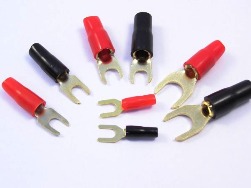 Have you ever observed fused plastic enclosures of apartment switchboards? Do you know the kind of brutally charred and burnt-out zero wires? Well, maybe you saw a dull sight, which is a hedgehog sticking out in different directions from the wires of wires and cables, planted in an access panel under a common bolt, even without a washer?
Have you ever observed fused plastic enclosures of apartment switchboards? Do you know the kind of brutally charred and burnt-out zero wires? Well, maybe you saw a dull sight, which is a hedgehog sticking out in different directions from the wires of wires and cables, planted in an access panel under a common bolt, even without a washer?
All these are vivid examples of frank neglect of the need to terminate wires and cable conductors. It’s not enough to get the cable into the device, you still need to worry about connecting it with a reliable electrical contact, about the minimum transition resistance.
The transition resistance is inherently a resistor on which heat is generated, and the amount of this heat will be the greater, the greater the current load of the wire. Actually, thanks to this heat everything burns and melts ...
What is the difference between a contactor and a starter?
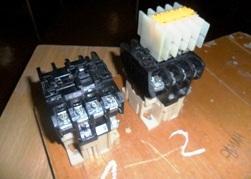 Even the most experienced electrical adjusters and just specialists with higher education do not always explain the fundamental difference between a starter and a contactor. Let's try to figure it out on our own.
Even the most experienced electrical adjusters and just specialists with higher education do not always explain the fundamental difference between a starter and a contactor. Let's try to figure it out on our own.
The common thing between the contactor and the starter is that both of them are intended for switching circuits, usually power ones. Therefore, contactors and starters are often used to start AC motors.
In addition to the power contacts, both the contactor and the starter necessarily include at least one (and most often far from one) pair of contacts for the control circuit: normally closed or normally open. These contactors and starters are similar. But how do they nevertheless differ? ...
Alarm clock on ... lighting! An example of using an electronic timer
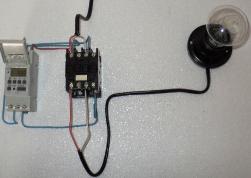 How to make lighting turn on strictly according to schedule? For example, you go to work at 7.40 and return at 17.20 and want the light to be on above the front door at that time.
How to make lighting turn on strictly according to schedule? For example, you go to work at 7.40 and return at 17.20 and want the light to be on above the front door at that time.
Imagine, come to the house, and you are already greeted by a burning lamp and no need to look for the switch in the dark, the light automatically turns on and after a certain time turns off independently, without your participation.
Or another example, you went to rest, but you don’t have an apartment signal, then you can create an “effect of presence”. In your absence, the light in the apartment itself will turn on and off as if no one had gone anywhere. I know people who turn off water heaters (electric titans) and electric heating boilers during the day, and turn them on only at night ...
